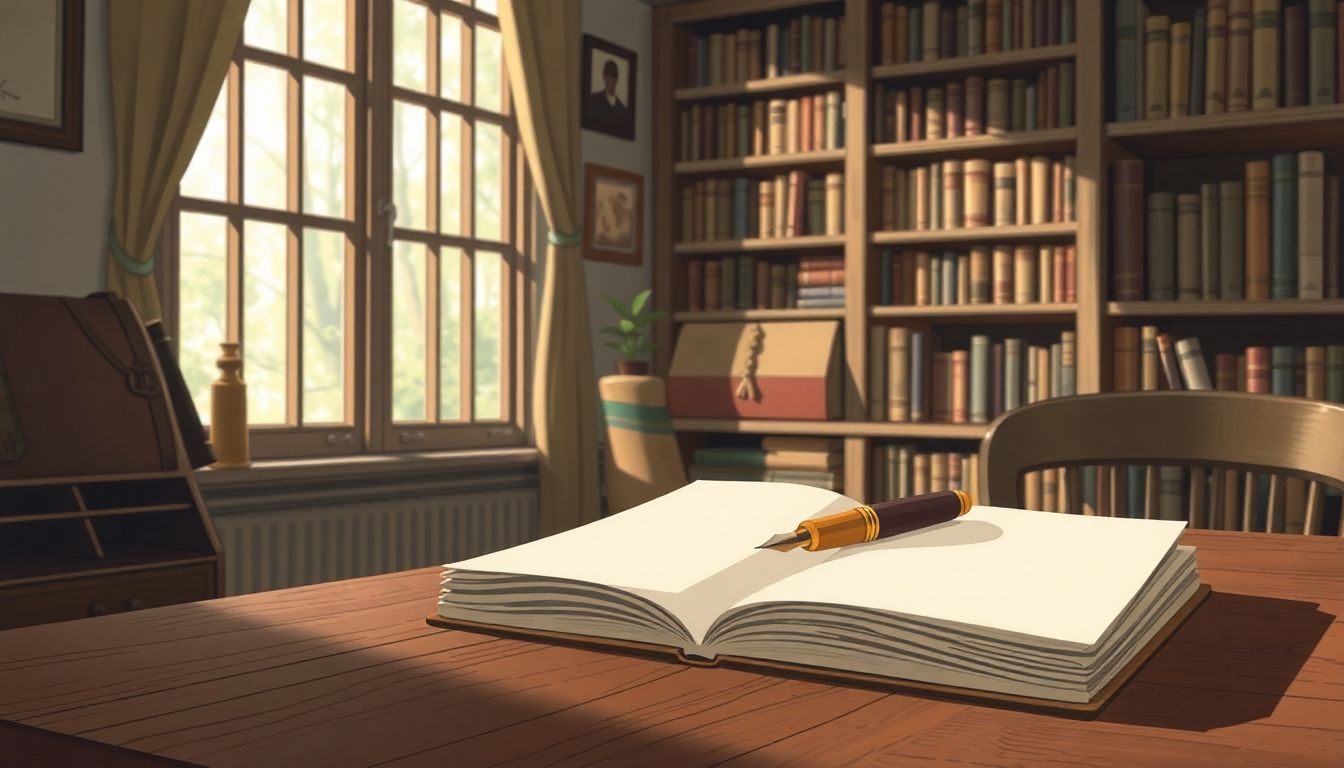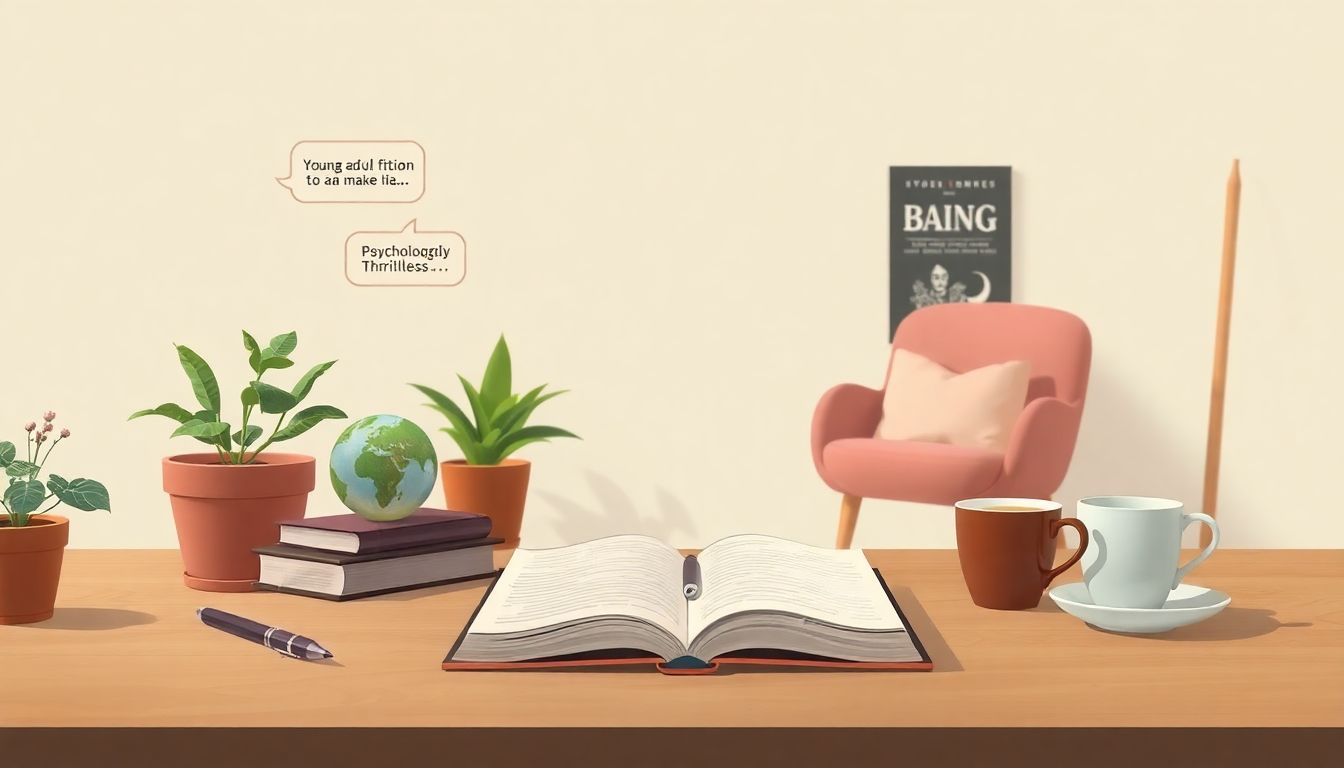Writing can feel tricky—especially when you’re trying to make your story shine in a particular genre. Maybe you’re thinking, “How do all these popular authors nail the tone and framework so well, and where do I even start?” I totally get it; every genre has its own quirks.
The good news is, we’ll sort it out together right here. Stick around, and you’ll find all you need to understand what makes genre writing tick and learn simple strategies for bringing out your best storytelling.
Ready? Let’s get started.
Key Takeaways
- Choose a genre you know well and list reader expectations (characters, pace, tone) clearly before writing.
- Read recent, popular books in your genre to understand current trends and audience interests.
- Structure your story according to genre norms—for example, speculative fiction needs solid world-building and clear climaxes, while literary fiction relies on slower, reflective pacing.
- Match writing style to genre; YA fiction feels friendly and conversational, while thrillers are tense and concise.
- Regularly practice genre-specific techniques like subtle clue-dropping in mysteries or real teen dialogue in YA.
- Keep readers’ preferences and expectations clear to deliver satisfying yet fresh experiences.
- During edits, ensure your work consistently meets genre conventions; seek feedback from genre-experienced writers.
- Experiment occasionally with other genres to sharpen skills and identify hidden strengths.

Step 1: Pick Your Genre and Understand Its Rules
Choosing the right genre for your book is your ticket to speaking directly to an engaged audience. First things first, decide what you genuinely enjoy reading—writing in a genre you love makes your job much easier. Next, take a moment to clearly identify genre expectations and common rules. For example, if you’re writing cozy mystery and feel-good fiction, know your audience expects lighter plots, relatable characters, and minimal violence. On the other hand, psychological thriller lovers want dark atmospheres, unreliable narrators, and twists that keep them guessing. You can’t comfortably wing it—each genre has its own playbook.
Here’s a practical tip: visit online communities and forums like Goodreads or Reddit to see conversations between enthusiastic readers. Their honest discussions will give you insights into exactly what fans love or can’t stand about books in your genre. You can also use specific tools like this helpful guide on generating strong horror plots to grasp storytelling approaches within a particular genre.
Once you’ve picked your genre, jot down a checklist of reader expectations—character types, tone, pacing, key themes—so you stay focused as you write. It’ll help you stay on track, especially in moments of writer’s block when you find yourself stuck staring at a blinking cursor.
Step 2: Read Popular Books in Your Chosen Genre
If you want to write great genre fiction, you can’t skip doing your literary homework. Spend time reading popular, recent books in your genre—especially those published within the last two to three years—to get a pulse on trends and reader interests. Think of it this way: great chefs taste tons of dishes before creating their next recipe, so do the same thing with books.
Let’s say you’re leaning toward writing young adult fiction, the single most in-demand genre in 2025. Popular YA books commonly blend relatable characters with engaging subgenres like sci-fi, thrillers, or romance. If you pick up bestselling YA titles, notice how successful authors balance teen voices and audience appeal, while exploring common adolescent themes. This simple strategy provides handy inspiration.
Reading current hits in your genre will also help you align with what agents and publishers actively seek. For example, LGBTQ+ fiction is booming, and publishers specifically seek LGBTQ+ authors whose genuine experiences resonate authentically with readers—so be mindful of your specific angle as you approach your own writing project.
If buying lots of books gets expensive, libraries and ebook subscription services can give you free or affordable access to trending titles. Besides reading, consider volunteering to become a beta reader for unpublished authors—that’s another effective way to sharpen your instincts.
Step 3: Use the Right Story Structure for Your Genre
In genre fiction, the way you structure your story really matters. Readers expect different rhythms depending on whether it’s literary fiction, romance, speculative fiction, or mystery.
Take speculative fiction, which includes sci-fi, fantasy, and dystopian narratives. Typically, readers anticipate worlds that feel immersive and thoughtfully built. So your structure will likely include scenes for world-building, action sequences, and clearly marked climaxes that pull readers deep into your imagined settings. A handy dystopian plot generator can spark ideas to shape your story in a familiar structure but with fresh, original twists.
On the other hand, contemporary fiction with social themes often relies on slower-building tension, character-driven scenes, and reflective moments rather than constant action.
A clear plot structure keeps readers engaged because they sense the satisfying shape of your story on an intuitive level. Consider creating a simple outline based on highly successful books in your genre—track chapters where major plot points happen, notice pacing and scene balance, and reflect these insights in your own narrative.
Finally, ask yourself honestly: is your story satisfying genre expectations without becoming too predictable? Finding that sweet spot between expectation and originality can make your book stand out.

Step 4: Write in a Style That Matches Your Genre
The key here is to match your writing style to what your readers already love about your chosen genre.
For example, young adult fiction usually has a conversational style, making readers feel like they’re chatting with friends—that’s why it’s so popular among teens and even adults.
On the flip side, speculative fiction readers expect deep immersion, vivid descriptions, and imaginative scenes—you might experiment writing short, evocative vignettes to nail down this style.
If you’re crafting psychological thrillers, a slightly sparse, intense style helps build tension; short, sharp sentences can ramp up suspense, keeping readers hooked until the final twist.
An effective way to grasp style nuances is to analyze a page or two from top bestsellers in your genre and notice their vocabulary, sentence length, and tone.
Try writing sample scenes using different approaches and see what’s comfortable for you yet aligns with reader expectations—it’s a balancing act, but one you get better at with practice.
Step 5: Practice Common Techniques Specific to Your Genre
Genres often have their favorite storytelling tricks, so practice these to improve your craft and attract readers who love these conventions.
In cozy mysteries, readers expect cleverly placed clues and red herrings—practice dropping subtle hints without being overly obvious to keep your readers guessing.
YA fiction fans appreciate authentic teen dialogue, subplots about friendships, and coming-of-age struggles—spend time fine-tuning your dialogue to make it sound realistic.
For writers exploring speculative fiction, experiment with world-building through short exercises, such as imagining how daily life works in your invented society, or using fun tools like a dystopian plot generator to spark fresh storylines.
A practical tip: write short stories as practice pieces to master different techniques before wrapping them into your book’s chapters, which keeps practice practical and fun.
Step 6: Keep Your Audience Expectations in Mind
Understanding what your readers expect is key to delivering exactly what they’re looking for, without feeling predictable.
For instance, readers turning to cozy mysteries and feel-good fiction expect your story to offer light-hearted escape and resolutions that leave them smiling.
Psychological thriller readers crave twists, mind-games, and dark revelations—aim not to disappoint by pairing a character-driven compelling narrative with unexpected turns.
LGBTQ+ fiction demands authentic representation written from lived experiences, so being genuine about your characters and their emotions matters greatly.
Check fan communities online or review popular books’ reader reactions on sites like Goodreads for real insights into reader delights or disappointments—you can even volunteer as a beta reader to get a first-hand look at how authors shape manuscripts for specific audiences.
Step 7: Edit and Revise With Genre Conventions in Mind
During revisions, focus not just on grammar and typos but also if your manuscript truly aligns with genre norms.
For example, contemporary fiction with social themes should authentically reflect real-world issues; during editing, consider whether scenes discussing topics like climate change or mental health feel genuine and relatable.
Check if speculative fiction scenes uphold immersion and logic; inconsistencies can disrupt readers’ experiences, so scrutinize your manuscript for holes in your created world.
Editing apps and proofreading software can help clean your prose, but nothing beats human feedback—try exchanging manuscripts with writers within your genre for an honest, insightful critique.
As you polish your manuscript, you might also explore how to format dialogue correctly, since that significantly influences readability and dramatically improves reader immersion.
Step 8: Try Writing in Different Genres to Find Your Strengths
Testing your writing in multiple genres doesn’t mean abandoning your favorite; it’s more like cross-training at the gym—it strengthens diverse skills.
Maybe writing a dystopian short story stretches creativity and helps you reconsider pacing even if your main focus is contemporary fiction.
Or perhaps you usually write psychological thrillers—but dipping into cozy mysteries reminds you how to effectively build up suspense through subtler techniques.
If you’re adventurous, experimenting with LitRPG, interactive fiction, or even creating an interactive ebook can expand your storytelling toolkit and draw fresh inspiration.
This experimentation helps you identify strengths and natural interests you might overlook otherwise—because sometimes your potential best genre isn’t obvious until you test out something entirely new and unexpected.
FAQs
Knowing the rules of your chosen genre helps you clearly meet reader expectations. Readers familiar with specific genres anticipate certain structures and narrative techniques, so sticking closely to those conventions makes your writing more relatable and satisfying.
Yes, reading well-known books in your target genre shows what readers enjoy most. It gives practical examples of successful plot structure, themes, and writing styles, helping you create an appealing and competitive story in your genre.
Matching your style with genre conventions takes time and practice. Study how successful authors in the same genre express themselves, identify specific stylistic patterns they use, and gradually shape your writing style to better resonate with target readers.
Definitely. Trying out different genres can help you identify your strengths and weaknesses and discover skills you didn’t know about. Experimenting across various genres broadens your writing abilities and helps pinpoint your strongest writing areas.
